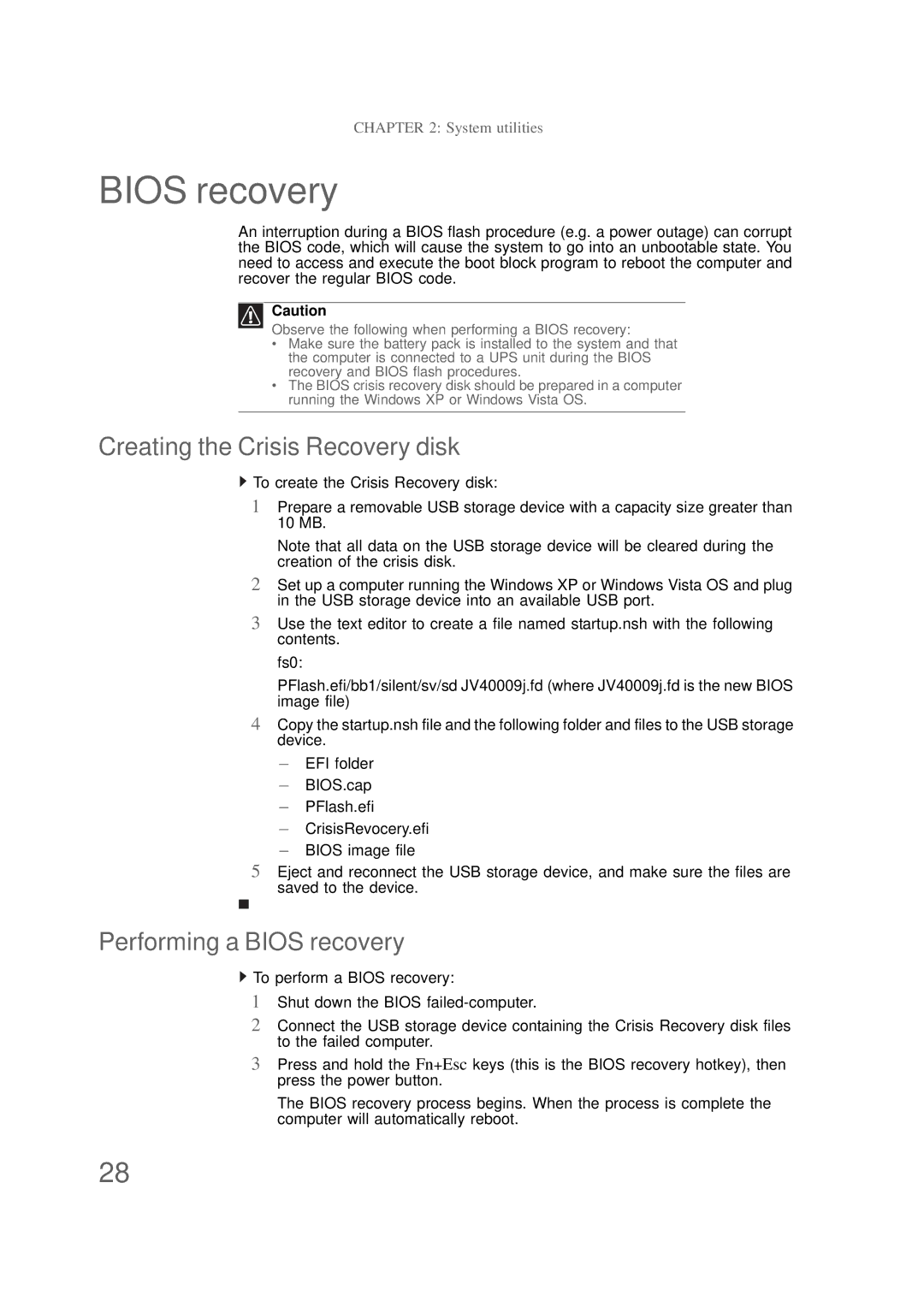
5 Eject and reconnect the USB storage device, and make sure the files are saved to the device.
Performing a BIOS recovery
To perform a BIOS recovery:
1 Shut down the BIOS failed-computer.
2 Connect the USB storage device containing the Crisis Recovery disk files to the failed computer.
3 Press and hold the Fn+Esc keys (this is the BIOS recovery hotkey), then press the power button.
The BIOS recovery process begins. When the process is complete the computer will automatically reboot.
28
EFI folder BIOS.cap PFlash.efi CrisisRevocery.efi BIOS image file
–
–
–
–
–
Creating the Crisis Recovery disk
To create the Crisis Recovery disk:
1 Prepare a removable USB storage device with a capacity size greater than 10 MB.
Note that all data on the USB storage device will be cleared during the creation of the crisis disk.
2 Set up a computer running the Windows XP or Windows Vista OS and plug in the USB storage device into an available USB port.
3 Use the text editor to create a file named startup.nsh with the following contents.
fs0:
PFlash.efi/bb1/silent/sv/sd JV40009j.fd (where JV40009j.fd is the new BIOS image file)
4 Copy the startup.nsh file and the following folder and files to the USB storage device.
CHAPTER 2: System utilities
BIOS recovery
An interruption during a BIOS flash procedure (e.g. a power outage) can corrupt the BIOS code, which will cause the system to go into an unbootable state. You need to access and execute the boot block program to reboot the computer and recover the regular BIOS code.
Caution
Observe the following when performing a BIOS recovery:
•Make sure the battery pack is installed to the system and that the computer is connected to a UPS unit during the BIOS recovery and BIOS flash procedures.
•The BIOS crisis recovery disk should be prepared in a computer running the Windows XP or Windows Vista OS.
